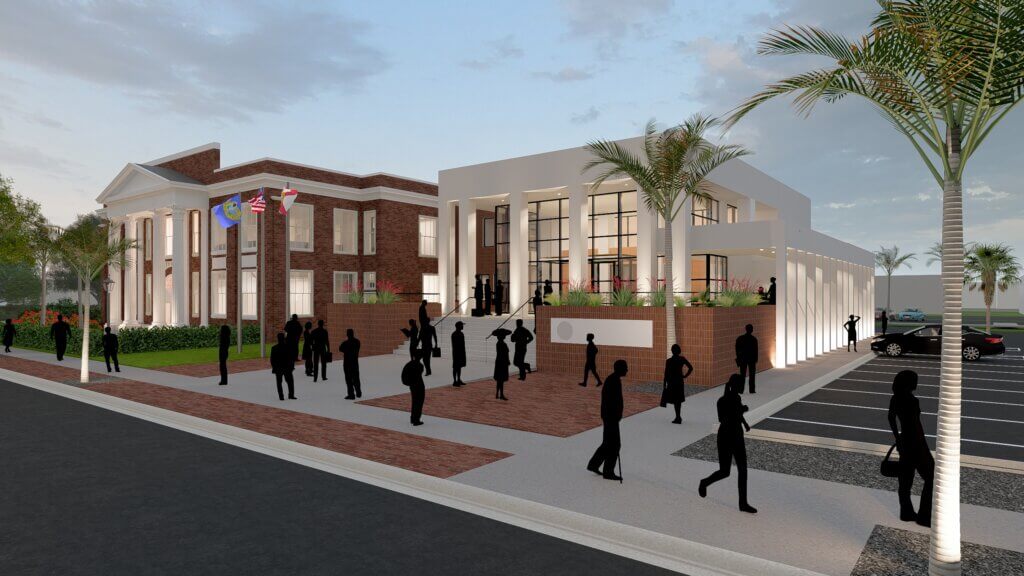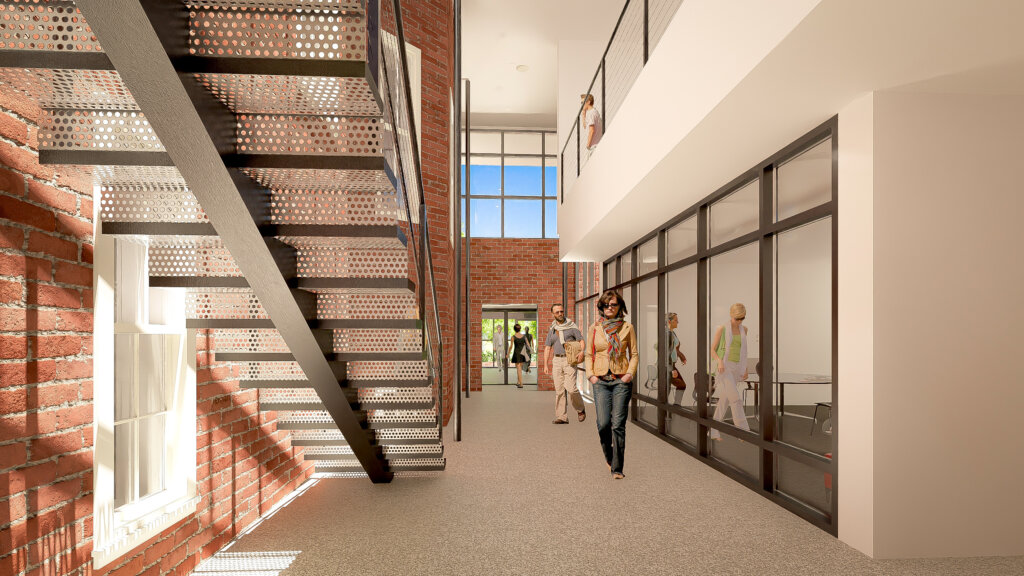The state of Florida stands at the front lines of climate extremes – hurricanes, heat and flooding. In this type of environment, buildings can no longer just be beautiful or functional, they must also be resilient. The future of design, no matter the climate, depends on creating structures that can withstand nature while keeping people safe, comfortable and prepared for whatever comes next.
Goodwyn Mills Cawood (GMC) Architecture Practice Leader and AIA Florida Vice President of Resiliency Julian Norman-Webb is at the forefront of this movement. Located in the City of Sarasota, Julian is an expert in resilient design and seeks to create change in the industry through advocacy.
What does resilient architecture mean?
It’s simple – a design built to last.
Resilient architecture is the practice of designing and building structures that are able to withstand and recover from challenges such as natural disasters, climate change or even everyday wear.
Designing with resilience in mind is all about creating buildings that protect people, minimize damage and help communities to recover quickly and remain functional for years to come.
Designing inside and out
When beginning the planning process for a new facility, considering the exterior is just as critical as the interior. As Julian explains, thoughtful site placement, orientation and stormwater management are important to reduce flooding, improve water quality and ensure a stable environment for the building.
The surrounding landscaping also plays a vital role. Plants and green spaces absorb water, lower surface temperatures and make outdoor areas practical and safe for when emergencies arise.
Being proactive
In high-risk areas like Florida where hurricanes typically hit multiple times a year, it’s not a question of if disaster will strike – it’s when.
In Julian’s words, “Design comes down to the details.” It’s extremely important to ensure buildings are of good quality, making sure every corner and interface are detailed correctly. And although planning and design are critical, architects must stay vigilant during construction to ensure every piece of the project is executed properly.
Beyond disaster: Longevity and occupant well-being
Resilient architecture isn’t only about surviving disasters – it’s about building spaces that last and improve the daily lives of those who occupy them. Strategies like daylighting and daylight harvesting are especially effective. Daylighting is the controlled use of natural light to illuminate a building, and daylight harvesting is a lighting control strategy that brings more natural light into a space without adding excess heat. Both practices are used to reduce energy and costs, while benefiting the buildings’ occupants as well.
Julian notes, “Daylighting is underestimated and we often misjudge its value for its occupants. It improves the mental wellbeing of the people inside, while increasing occupant engagement.”
Another important strategy is minimizing the heat island effect. Urban areas are often known to trap heat, in turn raising temperatures and energy costs. When designing a structure, architects are able to mitigate this by adding green spaces, planting trees and using reflective roofing materials to help reduce heat – saving energy and creating a healthier, more sustainable environment that extends a building’s lifespan.
Looking ahead
As the future of architecture advances, resilience should not be an afterthought, but instead be part of the initial conversation.
Through his work in the industry and his role as AIA Florida Vice President of Resiliency, Julian is making strides to change the lack of education and awareness on the topic, advocating for policies and best practices that prioritize resilient design.
The more architects prioritize resilience, the longer buildings will last, and the better they will serve the people who live, work and gather within them.

